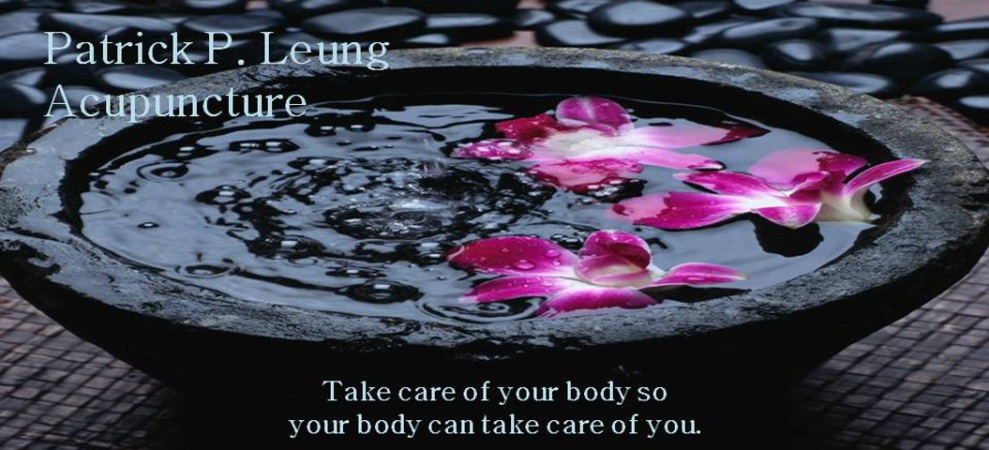The 1978 Acupuncture Licensure Act identifies acupuncture as a Primary Health Care profession in California. A Licensed Acupuncturist in this state is also trained and tested for proficiency in herbal prescription.
Holistic approach: Traditional Chinese Medicine (TCM) is a comprehensive, natural health care system, which has evolved over thousands of years. It provides the conceptual foundation for the practice of acupuncture and Chinese herbology. Complementary to, yet different from, the reductionistic approach of modern Western biomedicine, TCM puts its primary focus on the holistic, energetic aspect of health. Wellness is seen as a harmonious state of the body, mind and spirit. Qi: At the heart of TCM is the concept of Qi (pronounced "chee"). Qi can be loosely translated as "life energy" or "life force." Qi is believed to circulate the human body along a network of meridians. The smooth operation of Qi implies health and the disruption of this "life energy" means sickness. Healing is the process where the equilibrium of Qi is restored.
Diagnostic method: The emphasis of a TCM diagnosis is to discern patterns of disharmony. A patient's medical history is taken along with information regarding life-style and chief complaints. Also may be taken into consideration are findings from channel palpation, pulse-taking and observations of the tongue complexion. A physical exam may be performed. Laboratory tests, X-rays and MRIs may also be ordered.
ACUPUNCTURE
Homeostasis: A major goal of acupuncture treatments is the maintenance of the body's physiological equilibrium. Thin needles are usually placed on strategic locations (acu-points) along the body's meridians. But acu-points outside of known meridians may also be used. Slight manipulation of these needles is then applied. The idea is to solicit homeostatic balance, whether it be pain control, stress management, healing of disorders, optimization of health or the prevention of illness.
Disposable needles: Only sterilized disposable needles are used for acupuncture in this office. These needles are used only once and are discarded after each use.
Does it hurt? Generally not. Depending on the acu-points and the techniques used, a vague numbness, heaviness, tingling or slight discomfort may be felt. A significant level of relaxation and euphoria may also be experienced during and/or after a treatment.
Needle phobia: Finger-pressure techniques in lieu of needling may be applied for people who are absolutely afraid of needles.
How long is a session? An initial visit typically takes 1 to 1 '/2 hours. A follow-up visit takes 45 minutes to an hour.
How many sessions? This depends on the nature of your visit and how responsive you are to acupuncture treatment. An acute condition requires fewer sessions than a chronic one. Wellness maintenance/tune-ups are ongoing. Some degenerative conditions may also need continuous treatments.
HERBOLOGY
Herbs or acupuncture? Herbal prescription can be used by itself or together with acupuncture. Traditionally, herbal therapy has often been used for functional disorders, hormonal imbalances and pathological changes in tissue structure.
Formulas or single herbs? Synergy is the key in Chinese herbology. Hence, single herbs are seldom used. Groups of herbs are formulated together to obtain the optimal energetic balance. Each formula is usually tailor-made to address an individual's health concerns.
Dry raw herbs: Through thousands of years of collective experience, numerous dry raw herbs' energetic properties, functions and centra-indications have been documented and sophisticated classical formulas have been constructed. The downside of using dry raw herbs, however, is an involved, tedious cooking process.
Herbal extracts: Modern manufacturing techniques have made concentrated herbal extracts available in powder, capsules, tablets and tinctures. Better quality control and ease of use are the major benefits.
Facebook => http://tinyurl.com/6gf8unc
Follow me on Twitter => http://twitter.com/pplacupuncture
Tweet
